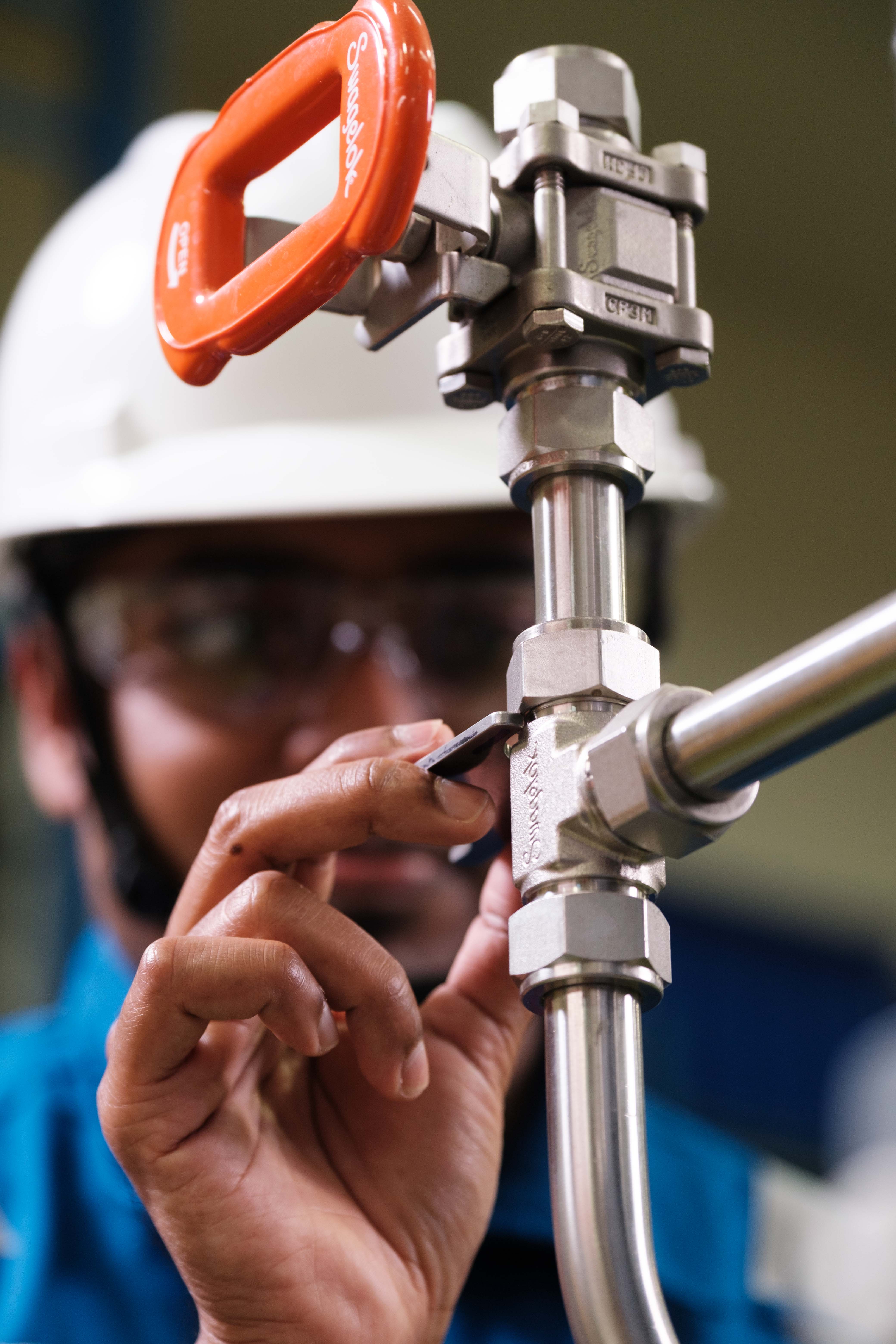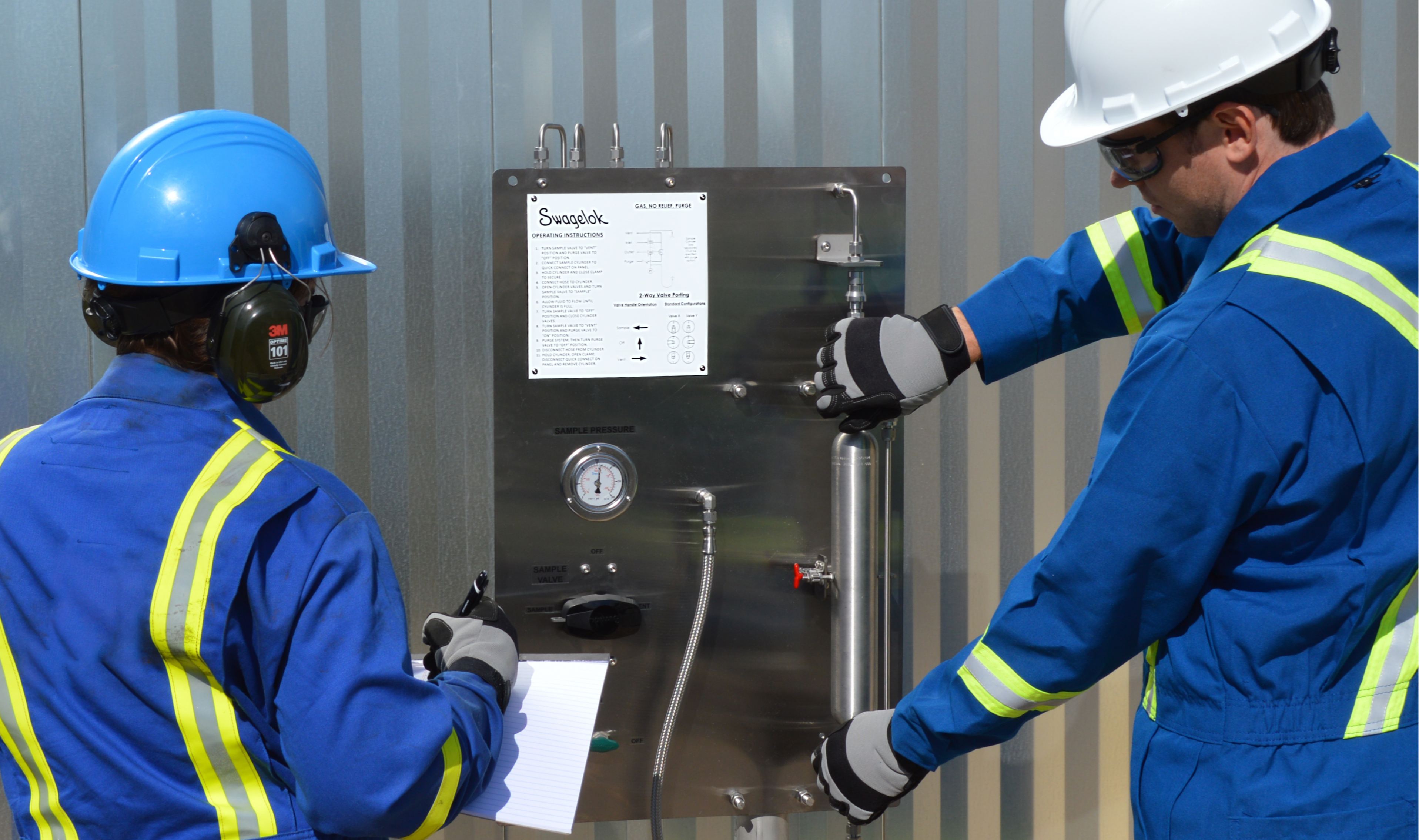Avoid unplanned repairs & downtime by investing in quality systems and components from Edmonton Valve & Fitting.
 With big plans for infrastructure and production facilities in the works, Alberta is ideally situated to become a major hydrogen hub in the coming years. Industry and government investment in hydrogen production promises to create a boom of opportunities in the emerging hydrogen industry—as long as operators can control their hydrogen plant capital costs.
With big plans for infrastructure and production facilities in the works, Alberta is ideally situated to become a major hydrogen hub in the coming years. Industry and government investment in hydrogen production promises to create a boom of opportunities in the emerging hydrogen industry—as long as operators can control their hydrogen plant capital costs.
Because hydrogen is a uniquely challenging gas to work with, it’s essential to use the right materials and components to avoid unplanned repairs and downtime. By using top-quality Swagelok components and leveraging expert consultation, you can keep hydrogen plant capital costs down over time and ensure the financial success of hydrogen operations.
Hydrogen is the smallest and lightest molecule in the universe, consisting of just two protons and two electrons under standard conditions. Because it is so tiny, it readily diffuses into many materials—especially under pressure. This phenomenon, known as hydrogen embrittlement, can lead to reduced tensile strength and ductility and increased crack propagation. Avoiding hydrogen embrittlement requires a careful selection of compatible materials for every component that handles hydrogen.
The ASME B31.12 Standard on Hydrogen Piping and Pipelines provides material requirements and recommendations for hydrogen service. This standard recommends austenitic stainless steels like 304 and 316 in the annealed condition for all components in hydrogen service. Carbon steels can be used for hydrogen gas at operating temperatures of at least -29°C but are not recommended for high-pressure applications, as they are susceptible to embrittlement. Most aluminum and copper alloys are also suitable for hydrogen. Nickel alloys should never be used for hydrogen, as they are highly vulnerable to embrittlement.
Another important set of standards for components used in hydrogen service is EU Regulation EC-79. While EC-79 is an EU regulation and applies specifically to components used in hydrogen-powered vehicles, the concerns and requirements are the same for any hydrogen service application. It is always safest to use EC-79 certified components for hydrogen service as they have been specifically designed, tested, and certified to handle the unique properties of hydrogen.
All EC-79 certified components intended for gaseous hydrogen service must undergo the following tests:
EC-79 Test Procedures for Gaseous Hydrogen Components
| Material Tests | Determines whether the component materials are compatible with hydrogen gas; non-metallic materials are additionally tested for their ability to withstand aging, and elastomeric materials are tested for ozone exposure compatibility. |
| Corrosion Resistance Test | Ensures components are resistant to corrosion by specified chemicals. |
| Endurance Test | Confirms components are capable of continuous, reliable operation by running them through specified temperature and pressure conditions for a number of cycles. |
| Pressure Cycle Test | Determines if components can withstand rapid pressure variations from atmospheric pressure to the maximum allowable working pressure (MAWP). |
| Internal Leakage Test | Ensures the components remain free of internal leakage when pressurized under different temperature conditions. |
| External Leakage Test | Checks that components are free from external leakage and porosity. |
Hydrogen’s unique properties require special design considerations, especially to prevent leakage. Every component must be carefully selected to ensure it is safe to use for hydrogen service—you can’t necessarily use the same valves and connections you would use for other applications like natural gas.
Leakage can lead to product loss, time-consuming repairs, and unplanned downtime, all of which add to ongoing hydrogen plant capital costs. And because tiny hydrogen molecules love to leak, it’s very important to use only components that have been specifically designed and tested to seal hydrogen.
Valves, tubing, and grab sampling systems are some of the most critical components when it comes to ensuring hydrogen plant efficiency and controlling capital costs. Below are some potential problems that can occur with these components and how to avoid them:
| Problem | Because hydrogen is such a small molecule, it will leak across the closure member or through the gaskets or packing if the valve is not manufactured to very tight tolerances. |
| Cost Impact | Fugitive hydrogen emissions mean you lose product whenever the system is running, and external leakage creates a fire hazard that can lead to equipment damage and unplanned downtime. |
| Solution | Use high-quality, EC-79 certified valves like Swagelok’s AFS series ball valves and CH series check valves. |
| Problem | Leakage can occur if the wrong types of fittings are used to connect tubing or if the tubing or fitting materials are not hydrogen-compatible. |
| Cost Impact | Leaking connections mean loss of product, costly maintenance, and potential fire hazards that can lead to equipment damage and unplanned downtime. |
| Solution | Avoid threaded connections which do not effectively seal hydrogen. Swagelok FK series fittings are some of the few tube fittings on the market rated for hydrogen service. The Swagelok Welding System (SWS) can also be used to weld leak-proof connections. |
| Problem | If the sampling system is not properly designed for hydrogen service, test samples may not be representative of the system. |
| Cost Impact | If test samples are inaccurate, you don’t know what’s going on in the system. Contamination or other problems can go undetected and compromise product purity. |
| Solution | A grab sampling system designed by a reputable vendor is recommended to ensure safety, reliability, and accuracy. Your vendor may recommend options like quick-connects or a purge bypass tube. |
While controlling leaks and efficiency is certainly important, personnel safety is always the most important concern for any hydrogen plant. The most significant risk in a hydrogen plant is fire. Hydrogen has a very wide range of flammability and low ignition energy, which means even a small amount of hydrogen in the air can start a fire, and it only takes a small spark to ignite it.
 Hydrogen fires can be much more dangerous than typical fires. Hydrogen flames are nearly invisible, produce no smoke, and radiate little heat, so you may not even realize there is a hydrogen fire unless you’re very close to it. Consequently, it is extremely important to protect your equipment and personnel from hydrogen fires by preventing leaks and conditions that can cause fires.
Hydrogen fires can be much more dangerous than typical fires. Hydrogen flames are nearly invisible, produce no smoke, and radiate little heat, so you may not even realize there is a hydrogen fire unless you’re very close to it. Consequently, it is extremely important to protect your equipment and personnel from hydrogen fires by preventing leaks and conditions that can cause fires.
The “fire triangle,” shown above, illustrates the three ingredients needed to start any fire: oxygen, heat, and fuel. In this case, hydrogen is the fuel, so it is critical to prevent it from mixing with oxygen or becoming overheated. This is why hydrogen-compatible, leak-proof components and materials are so important. As long as the hydrogen is contained within the pipes, tubing, and other components of the system, there is no danger. However, the smallest leak can expose hydrogen to oxygen in the air. At that point, all it takes is a heat source to potentially ignite a fire.
Edmonton Valve & Fitting provides expert consultation and industry-leading Swagelok products to the hydrogen industry in Alberta. Swagelok hydrogen-compatible systems and components are ideal for hydrogen service for their superior engineering, leak-tight designs, and high-pressure resistance. We offer EC-79 certified components that have been engineered and tested to ensure a long life cycle in hydrogen service, keeping your hydrogen plant capital costs in check. We also provide customized gas sampling systems for high-pressure hydrogen service that ensure sampling is reliable, accurate, and safe every time.
Our Field Advisors can perform an onsite consultation to assess your facility’s needs and recommend the best systems and components to ensure reliable operations. Field Advisory Services include, but are not limited to:

Learn more about the high-quality Swagelok components & systems Edmonton Valve & fitting offers.

Lorem ipsum dolor sit amet, consectetur adipiscing elit. Suspendisse tempor nisi ut vehicula commodo.
Learn More →
Lorem ipsum dolor sit amet, consectetur adipiscing elit. Suspendisse tempor nisi ut vehicula commodo.
Learn More →
Lorem ipsum dolor sit amet, consectetur adipiscing elit. Suspendisse tempor nisi ut vehicula commodo.
Learn More →
Lorem ipsum dolor sit amet, consectetur adipiscing elit. Suspendisse tempor nisi ut vehicula commodo.
Learn More →
Lorem ipsum dolor sit amet, consectetur adipiscing elit. Suspendisse tempor nisi ut vehicula commodo.
Learn More →
Lorem ipsum dolor sit amet, consectetur adipiscing elit. Suspendisse tempor nisi ut vehicula commodo.
Learn More →
Lorem ipsum dolor sit amet, consectetur adipiscing elit. Suspendisse tempor nisi ut vehicula commodo.
Learn More →
Lorem ipsum dolor sit amet, consectetur adipiscing elit. Suspendisse tempor nisi ut vehicula commodo.
Learn More →
Lorem ipsum dolor sit amet, consectetur adipiscing elit. Suspendisse tempor nisi ut vehicula commodo.
Learn More →Swagelok is a $2B developer of industrial fluid system products and services. Swagelok Edmonton is an authorized Swagelok Sales and Service Centre serving Canadian companies in clean energy, chemical, oil and gas, and other industries. Proud member of the Canadian Council for Aboriginal Business.
Tel: 780-437-0640.
Swagelok Edmonton values your privacy. This website uses cookies to enhance user experience and analyze performance and traffic. Our policies are posted here.
Login/Register | Privacy | Safe Selection | Centre Locator | Sitemap | Legal
© 2012-2024 Edmonton Valve & Fitting Inc.